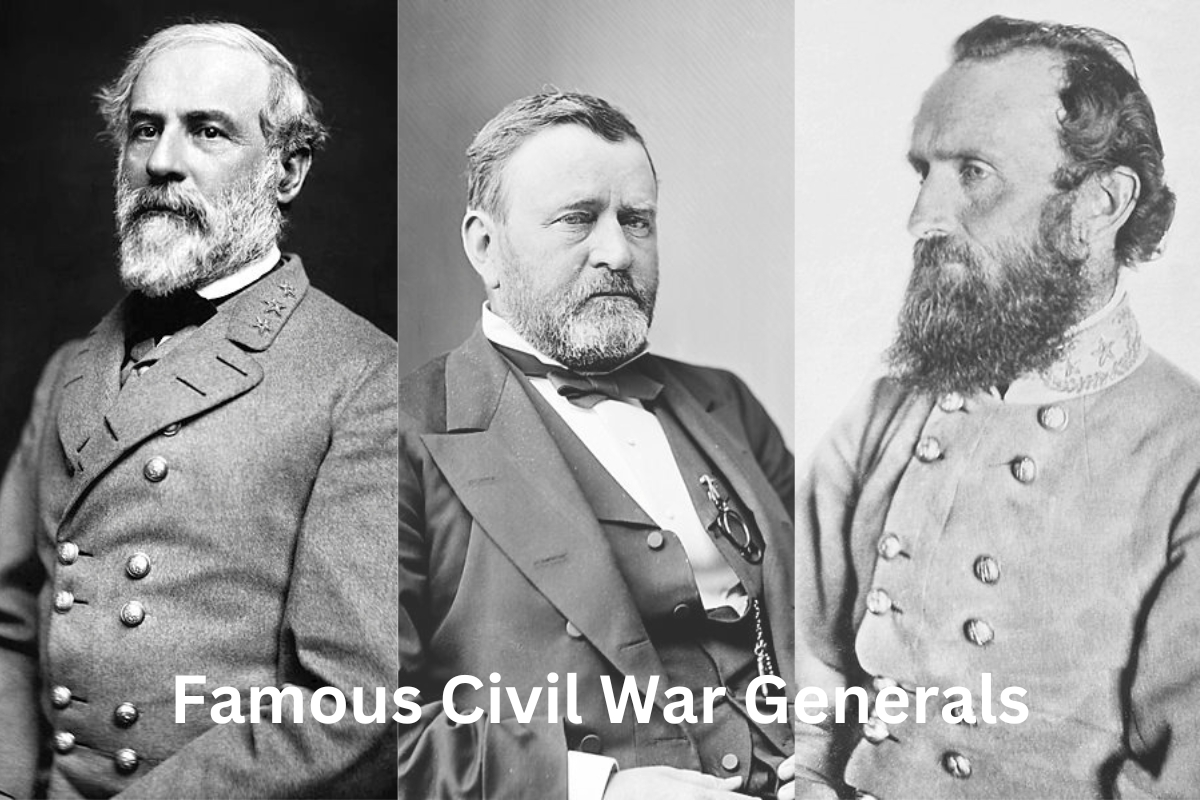The generals in the civil due to their position of leadership have become some of the most famous figures of the day.
In equal measure, both fame and failure could hinge on the outcome of every battle that they led.
Due to the similarity between the two armies in terms of structure, equipment, tactics, and training, the success of individual units in battle sometimes hinged on the caliber of their respective commanding officers.
The two sides actively looked for ways to acquire such military leadership. The general officers were handpicked by their respective national governments.
At the outbreak of war, the majority of senior officers had attended West Point or another military academy.
Also Read: Years of the Civil War – A Timeline of Events
When Lincoln made his general officer appointments in 1861, 82 of them were either trained officers or had prior military experience.
Jefferson Davis selected a total of 89 people, with 44 having some sort of formal education or experience. Only 16 Federal generals and 7 Confederate generals were political appointees without prior military experience.
Famous Civil War Generals
1. Ulysses S. Grant

The United States’ 18th president, Ulysses S. Grant (April 27, 1822 – July 23, 1885), was a military leader and politician. He held office from 1869 to 1877.
In 1865, he was the Commanding General of the Union Army and oversaw its decisive victory in the American Civil War. He later served as Secretary of War.
Later in his presidency, Grant became an effective civil rights executive by signing legislation creating the Justice Department and working with Radical Republicans to defend African Americans during Reconstruction.
Ohio-born Grant possessed a remarkable facility with equines. After being accepted to West Point, Grant finished 21st in his class and went on to serve honorably in the Mexican-American War.
Also Read: Top Civil War Battlefields to Visit
In 1848, he wed Julia Dent, and the couple went on to raise four kids. Grant withdrew from the army in 1854 and moved back in with his family, despite the fact that he was now poor.
After the outbreak of the American Civil War in 1861, he enlisted in the Union Army and quickly rose to prominence by leading the Union to a string of wins in the West.
Also Read: Accomplishments of Ulysses S Grant
In 1863, he led the Vicksburg campaign that secured the Mississippi River and effectively severed the Confederacy in two. President Abraham Lincoln promoted him to lieutenant general after his victory at Chattanooga.
Also Read: Civil War Presidents
Over the course of thirteen months, including the bloody Overland Campaign and the siege of Petersburg, Grant squared off against Robert E. Lee. After Lee abandoned Petersburg, Grant easily defeated him at Appomattox. On April 9, 1865, Lee formally ceded control of the South to Grant.
A week after Lincoln’s assassination, President Andrew Johnson promoted Grant to the rank of general in the army. After that, Grant and Johnson had a public disagreement over Reconstruction policy, and Grant used the Reconstruction Acts, which were passed despite Johnson’s veto, to ensure that newly freed African Americans were afforded their constitutionally guaranteed civil rights.
Grant, a war hero motivated to serve by a strong moral compass, was nominated for president in 1868 by the Republican Party and went on to win the presidency.
Grant’s presidency was marked by his efforts to revive the country’s economy in the wake of the war, his support for Congressional Reconstruction and the 15th Amendment, and his determination to eradicate the Ku Klux Klan.
Grant was instrumental in restoring the Union’s strength. To key positions in the government, he appointed both African Americans and Jews.
2. Robert E. Lee
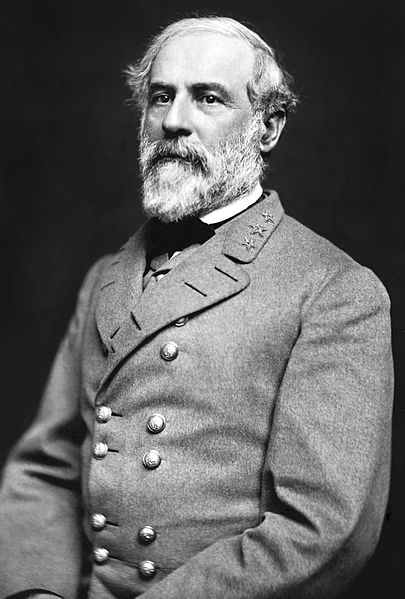
In the latter days of the American Civil War, Confederate general Robert Edward Lee (January 19, 1807 – October 12, 1870) oversaw the whole Confederate States Army.
Also Read: Robert E Lee Facts
From 1862 to 1865, he was in command of the Confederacy’s most formidable army, the Force of Northern Virginia, earning acclaim as a brilliant tactician in the process.
For 32 years, Lee served as an exceptional commander and military engineer in the United States Army. He graduated at the top of his class from the United States Military Academy. Henry “Light Horse Harry” Lee III, a Revolutionary War veteran, was his father.
He was the Superintendent of the United States Military Academy and gained national prominence for his service in the Mexican-American War. As an aside, Lee wed George and Martha Washington’s great-granddaughter Mary Anna Custis Lee. Lee embraced the law of slavery despite his moral objections and held hundreds of slaves.
Also Read: Differences Between the Union and Confederacy
Despite his desire for the nation to remain united and a high Union command offer, Lee decided to follow the lead of his native state of Virginia when it declared secession from the Union in 1861. During the first year of the Civil War, he served as a crucial military counselor to Confederate President Jefferson Davis and saw action in a few small engagements.
During the Peninsula Campaign in June 1862, after Joseph E. Johnston was wounded, Lee took command of the Army of Northern Virginia. Although he was unable to defeat George B. McClellan’s Union Army of the Potomac, he was successful in driving them away from the Confederate capital of Richmond during the Seven Days Battles.
Also Read: Confederate Army Facts
In August, at the Second Battle of Bull Run, Lee triumphed against Union forces commanded by John Pope. His assault of Maryland in September was cut short by the bloody but ultimately meaningless Battle of Antietam, and he was forced to retreat to Virginia.
Before launching his second invasion of the North in the summer of 1863, during which he was badly defeated by the Army of the Potomac under George Meade at the Battle of Gettysburg, Lee earned two significant victories at Fredericksburg and Chancellorsville.
General Ulysses S. Grant led his army in the brief and unsuccessful Bristoe Campaign that fall of 1864 before he was given command of Union forces in the spring.
Also Read: Appomattox Court House Facts
Bloody but ultimately fruitless engagements at the Wilderness and Spotsylvania preceded the lengthy Siege of Petersburg; in April 1865, Grant captured Richmond and destroyed much of Lee’s army, prompting Lee to surrender at Appomattox Court House.
3. George McClellan
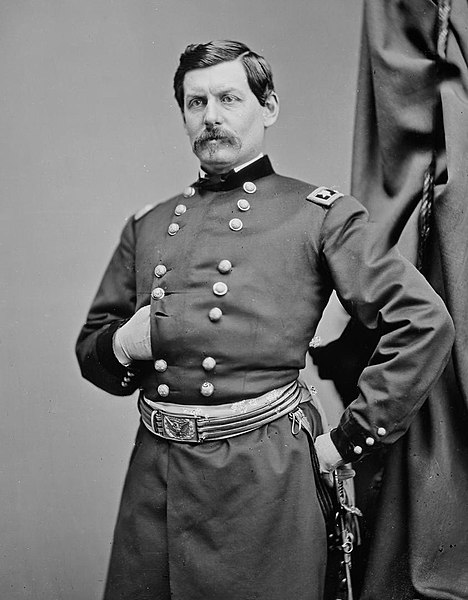
George Brinton McClellan was the 24th governor of New Jersey and an American soldier from December 3, 1826 until his death on October 29, 1885. He also worked as a civil engineer, railroad administrator, and politician.
McClellan, a West Point grad who distinguished himself during the Mexican-American War (1846–1848), then worked as a railroad executive and engineer until the start of the American Civil War (1861–1865).
McClellan served as the Union Army’s commanding general for a brief period (November 1861 to March 1862) and was promoted to the rank of major general early in the war, where he was instrumental in organizing and training the troops that would form the Army of the Potomac in the Eastern Theater.
A mutual distrust developed between General McClellan and President Abraham Lincoln, and McClellan was privately mocking of Lincoln. In the wake of the 1862 midterm elections, McClellan was relieved of his command in November.
Since McClellan did not pursue Lee’s army after the Union’s strategic but inconclusive victory at the Battle of Antietam in Sharpsburg, Maryland, this choice was influenced by that event.
After being demoted from his field command, McClellan ran against incumbent Republican Abraham Lincoln for the presidency in 1864 but lost to Lincoln by a large margin.
Repudiating his party’s program, which called for an end to the war and negotiations with the Confederacy, hurt his campaign. From 1878 to 1881, he was the 24th Governor of New Jersey. Later in life, he turned to writing and vehemently defended his actions during the Civil War.
4. Stonewall Jackson
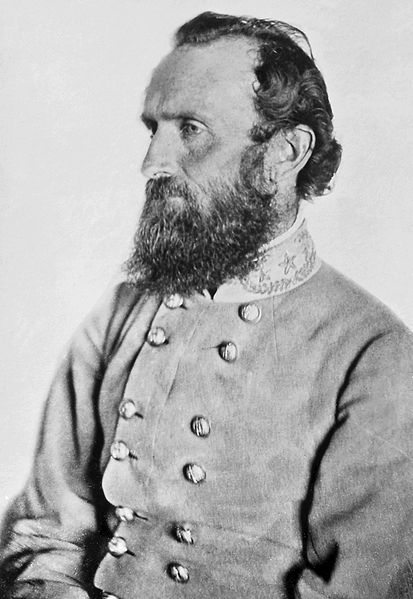
After Robert E. Lee, Confederate general Thomas Jonathan “Stonewall” Jackson (January 21, 1824–May 10, 1863) was arguably the most famous commander in the war.
Up to the day he passed, he participated in nearly every military operation in the Eastern Theater of the war, and his contributions were crucial to the outcome of several pivotal Civil War battles. Many experts in the field of military history rank him as one of the most skilled tacticians in United States history. Studies of his methods are currently being conducted.
Jackson attended the United States Military Academy at West Point and graduated in 1846. He was born in what was then a section of Virginia (now West Virginia).
Also Read: Stonewall Jackson Facts
He served in the U.S. Army during the Mexican-American War of 1846-1848 and earned distinction at the Battle of Chapultepec. From 1851 to 1861, he was a professor at the Virginia Military Institute, where he was widely disliked by his students.
5. William Tecumseh Sherman
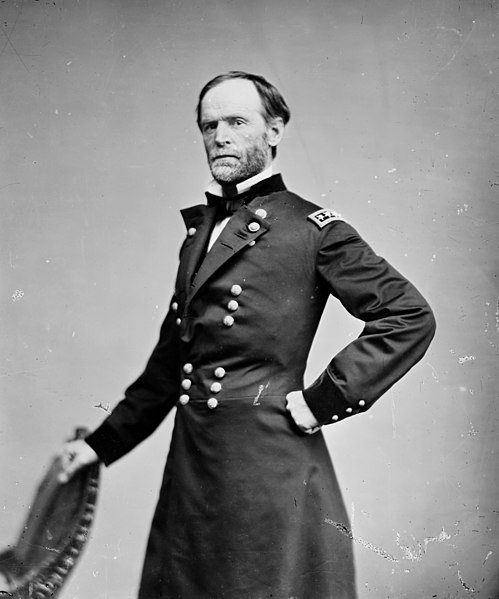
American soldier, merchant, educator, and writer William Tecumseh Sherman (February 8, 1820 – February 14, 1891) lived from the United States.
He was a Union commander during the American Civil War (1861–1865), where he was both admired and reviled for his ruthless scorched-earth tactics against the Confederate States. British military theorist and historian B. H. Liddell Hart referred to Sherman as “the first modern general.”
The son of a prominent Ohio political family, Sherman attended and graduated from West Point in 1840. He departed the army in 1853 to try his hand at private business, but he was not successful.
In 1859, he was appointed superintendent of what was then known as the Louisiana State Seminary of Learning and Military Academy and is now known as Louisiana State University.
Sherman commanded a brigade of volunteers at the First Battle of Bull Run in 1861 before being transferred to the Western Theater. As a result of his negative outlook on the war’s outcome, he had a nervous breakdown when stationed in Kentucky and had to take time off.
Also Read: People of the Civil War
As a means of recovery, he joined forces with General Ulysses S. Grant. Together with Grant, Sherman participated in the battles of Fort Henry and Fort Donelson, Shiloh, the operations that led to the fall of the Confederate stronghold of Vicksburg on the Mississippi River, and the Chattanooga campaign, which resulted in the routing of Confederate armies in Tennessee.
After Grant’s death in 1864, Sherman became command of the Union’s Western Theater. He was instrumental in the military success that led to President Abraham Lincoln’s re-election: the conquest of Atlanta.
Sherman then marched into Georgia and the Carolinas, engaging in minor action but wreaking massive destruction on cotton farms and other infrastructure as part of a deliberate plan to weaken the Confederacy.
Sherman accepted the surrender of Confederate troops in the Carolinas, Georgia, and Florida in April 1865, but the terms he negotiated were regarded excessively liberal by United States Secretary of War Edwin Stanton, who subsequently asked General Grant to alter them.
After Grant became President of the United States in March 1869, Sherman replaced him as the Army’s commanding general. From 1869 through 1883, Sherman led the American army’s efforts in the Indian Wars.
He penned his memoirs in 1875, which became one of the most famous first-hand accounts of the Civil War, and he refused to get drawn into party politics.
6. J.E.B. Stuart
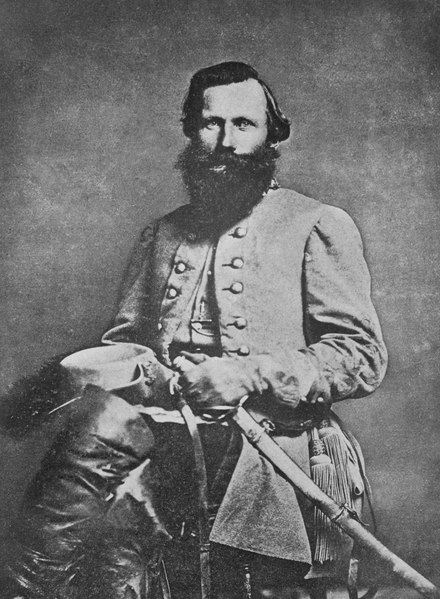
American Civil War officer and Confederate States Army general James Ewell Brown “Jeb” Stuart (February 6, 1833 – May 12, 1864) was born in Virginia. Friends and family shortened his name to “Jeb,” an acronym for his first and middle names.
Stuart was a famous cavalry commander who excelled in reconnaissance and incorporating cavalry into offensive actions.
Also Read: J.E.B Stuart Accomplishments and Achievements
The serious work he did made him the trusted eyes and ears of Robert E. Lee’s army and inspired Southern morale, despite his cavalier image (red-lined gray cape, the yellow waist sash of a regular cavalry officer, hat cocked to the side with an ostrich plume, red flower in his lapel, often sporting cologne).
After completing his time at West Point in 1854, Stuart served in the United States Army in the states of Texas and Kansas. In addition to his participation in the apprehension of John Brown at Harpers Ferry, Stuart had experience fighting Native Americans on the frontier and seeing the bloodshed of Bleeding Kansas.
After seeing the secession of his home state of Virginia, he resigned his commission and joined the Confederate Army, where he served in the Shenandoah Valley under Stonewall Jackson and later in increasingly prominent cavalry commands within the Army of Northern Virginia, where he was instrumental in every major campaign up until his death.
7. Joseph Hooker
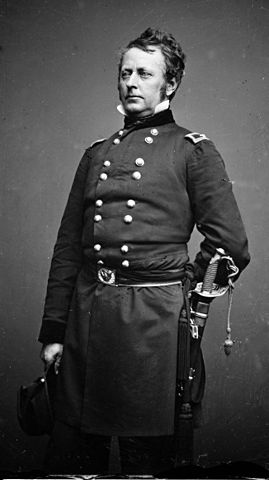
Union commander Joseph Hooker (November 13, 1814 – October 31, 1879) is best known for losing the Battle of Chancellorsville to Robert E. Lee and the Confederates in 1863.
Before leaving the Army, Hooker had served in the Seminole Wars and the Mexican-American War, earning three brevet promotions.
He joined the Union army as a brigadier general at the commencement of the Civil War and proved his worth at Williamsburg, Antietam, and Fredericksburg, earning him the position of commander of the Army of the Potomac.
Hooker’s grand strategy for Chancellorsville failed due to the actions of Lee, who split his army and routed a Union corps, the incompetence of his subordinate generals, and Hooker’s own lack of nerve. Lee gained the upper hand after the setback and headed north to Gettysburg.
Hooker was allowed to remain in command, but he resigned after General Halleck and President Lincoln denied his request for reinforcements. Three days before the Battle of Gettysburg, George G. Meade was promoted to head the Army of the Potomac.
Hooker returned to the battlefield in November 1863, assisting in the relief of the besieged Union Army at Chattanooga, Tennessee, and continuing in the Western Theater under Maj. Gen. William T. Sherman, but he left in protest before the end of the Atlanta Campaign after being passed over for promotion.
Due to a journalist’s spelling error, Hooker was dubbed “Fighting Joe,” and the name stayed. His offices were notorious for parties and gambling, and he himself had a reputation as a hard-drinking ladies’ man.
8. P.G.T. Beauregard

Initiating the American Civil War with his assault on Fort Sumter on April 12, 1861, Pierre Gustave Toutant-Beauregard (May 28, 1818 – February 20, 1893) was a Confederate military officer of Louisiana Creole heritage.
Even though he rarely used it, P. G. T. Beauregard is the name most people know him by today. In his letters, he always used the initials G. T. Beauregard.
While serving as an engineer officer in the Mexican-American War, Beauregard put his West Point education in military and civil engineering to good use.
After a brief stint in 1861 as the superintendent of the United States Military Academy, he resigned from the Union Army to become the first brigadier general in the Confederate States Army following Louisiana’s secession.
At the outset of the Civil War on April 12, 1861, he commanded the fortifications of Charleston, South Carolina. Three months later, he triumphed in the First Battle of Bull Run in Manassas, Virginia.
After his time in the military, Beauregard settled back down in Louisiana, where he worked as a railroad executive and promoted the Louisiana Lottery to amass a fortune while advocating for black civil rights such as suffrage.
9. Winfield Scott Hancock
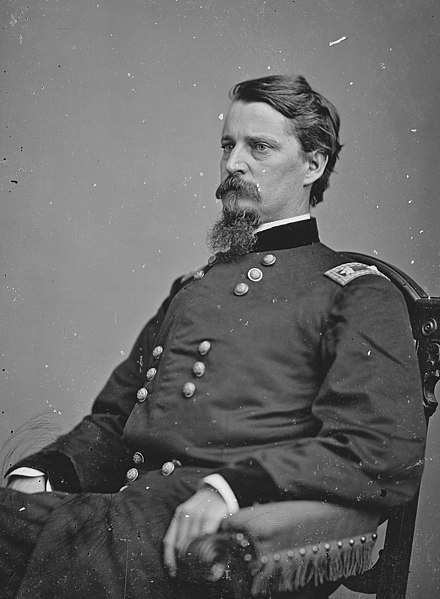
United States Army commander and 1880 Democratic presidential contender Winfield Scott Hancock (February 14, 1824 – February 9, 1886).
His four decades of military service were highlighted by his roles as a Union general in the American Civil War and Mexican-American War. His exceptional leadership at the 1863 Battle of Gettysburg earned him the nickname “Hancock the Superb” among his Army peers.
Hancock continued to serve in the military after the Civil War, taking part in military Reconstruction in the South and the Army’s presence on the Western border.
Given his standing as a Unionist and advocate of states’ rights, as well as his fame as a war hero at Gettysburg, Hancock may have run for president.
It was a close election between him and Republican James A. Garfield in 1880, when he was the Democratic nominee for President. In 1885, Hancock oversaw President Ulysses S. Grant’s funeral procession.
10. Joseph Johnston
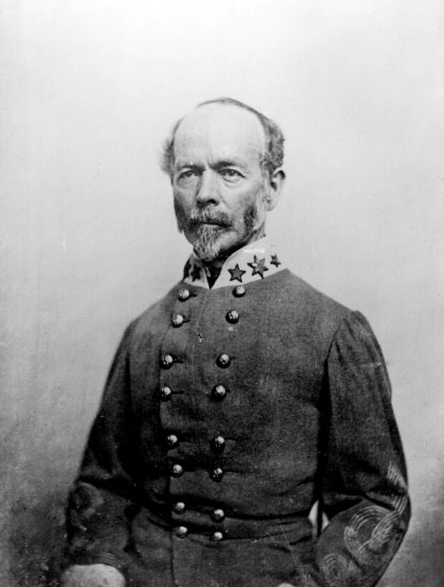
A career military officer for the United States of America, Joseph Eggleston Johnston (February 3, 1807 – March 21, 1891) was a hero of the Mexican-American War (1846–1848) and the Seminole Wars.
Shortly after Virginia declared its independence from the Union, he enlisted in the Confederate States Army and quickly rose through the ranks to become a major general.
Johnston graduated from the United States Military Academy at West Point, New York, as a civil engineer in the same year as Robert E. Lee. He served our country in the Sunshine State, Lone Star State, and Wheat State. In 1860, he was the Quartermaster General of the United States Army, a position that earned him the title of brigadier general.
Conflict with Jefferson Davis, president of the Confederacy, undermined Johnston’s effectiveness during the American Civil War. Most of the campaigns he personally led to defeat.
Even though P.G.T. Beauregard was his subordinate, he was the senior Confederate commander at the First Battle of Bull Run in July 1861.
Johnston’s post-war career took him to the executive ranks of the railroad and insurance industries. To the House of Representatives he was elected as a Democrat, where he stayed for just one term.
Under Grover Cleveland, he served as the railroad department’s commissioner. Ten days after Johnston attended Sherman’s burial in the pouring rain, he died of pneumonia.
11. George Henry Thomas
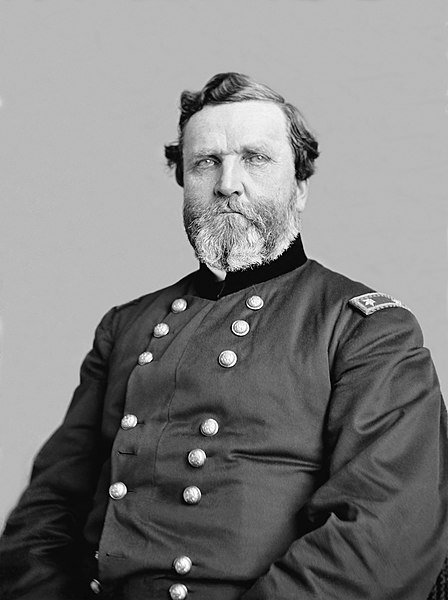
In the American Civil War, Union Army general George Henry Thomas (July 31, 1816–March 28, 1870) was a key figure in the Western Theater.
Despite his Virginian ancestry, Thomas served as a Unionist in the South during the Civil War and remained in the United States Army. He had previously fought in the Mexican-American War (whose home state would join the Confederate States of America).
At Mill Springs in Kentucky, he led the Union to one of its earliest successes of the war, and later at Perryville and Stones River, he oversaw key subordinate commands. His most well-known moniker, “the Rock of Chickamauga,” comes from the 1863 battle where his heroic resistance kept the Union Army from being entirely defeated.
He then made a spectacular advance on Missionary Ridge during the Battle of Chattanooga. During the Franklin-Nashville Campaign in 1864, he destroyed the army of Confederate General John Bell Hood, a former pupil of his at West Point, in what is considered one of the war’s most important victories.
Despite a commendable performance in the Civil War, Thomas was not as widely recognized as his colleagues Ulysses S. Grant and William T. Sherman.
He was known as a cautious leader who refused promotions if he did not believe they were warranted and took his time making decisions.
12. Winfield Scott

An American military leader and politician, Winfield Scott was born on June 13, 1786 and died on May 29, 1866. From 1814 until 1861, he was a general in the U.S. Army, fighting in the War of 1812, the Mexican-American War, the early phases of the American Civil War, and confrontations with Native Americans.
Scott campaigned for president as a Whig candidate in 1852 but lost to Franklin Pierce, the Democratic nominee. He was known as the Grand Old Man of the Army for his many years of service and as Old Fuss and Feathers for his strict adherence to military protocol.
Following his retirement, he settled in West Point, New York, where he passed away on May 29, 1866. Many historians and military experts now rank Scott as one of the most successful generals in American history.
13. Ambrose Burnside

American soldier and politician Ambrose Everett Burnside (May 23, 1824 – September 13, 1881) served as a top Union general during the Civil War and was elected to the governorship of Rhode Island three times. He also invented several useful products and ran a thriving manufacturing business.
His early successes in the Eastern Theater earned him a promotion that was well beyond his capabilities. However, he is now best known for two crushing losses at Fredericksburg and the Battle of the Crater (Petersburg). An investigation exonerated him in the second incident, but he was never trusted again as a military leader.
Burnside was a humble man who knew his own limitations but was thrust into a position of power against his will.
It’s fair to say that bad fortune followed him everywhere he went: to the battlefield, where he was killed, and into the boardroom, where he was cheated out of the profits from a successful cavalry rifle he had invented. The term “sideburns” was coined to describe the impressive facial hair growth that came to be associated with him.
